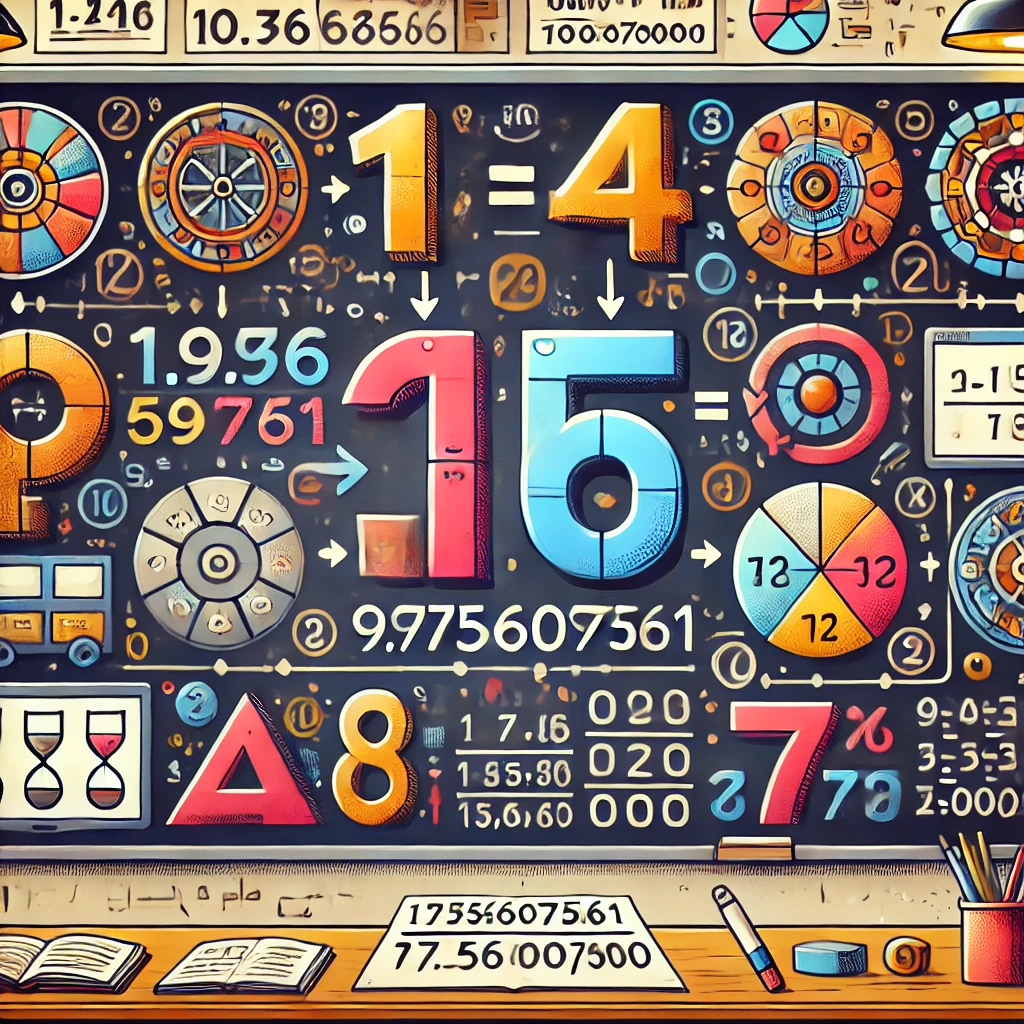Deciphering: 10.9756097561 As a Fraction or Mixed Number
Introduction: Unveiling 10.9756097561 in Fractional Terms
In the world of mathematics, transforming a decimal into a fraction or mixed number not only enhances our understanding of number theory but also bridges our daily EDU calculations with conceptual math. In this exploration, we will convert the 10.9756097561 as a fraction or mixed number counterpart, simplifying it along the way, and understanding why such conversions are significant in both academic and real-life contexts.
Step 1: The Essence of 10.9756097561 as a Mixed Number
A mixed number combines a whole number with a fraction, representing quantities that straddle between whole and part. To initiate our conversion, we recognize that the number ‘10.9756097561 as a fraction or mixed number’ comprises a clear whole part and a decimal part, which we will address separately to construct our mixed number.
Step 2: Simplifying the Integer Component
The integer or whole number component of 10.9756097561 as a fraction or mixed number is straightforward—’10’. This will serve as the anchor for our mixed number, to which we will add the fractional equivalent of the decimal part.
Step 3: Deciphering the Decimal
Decimals, by nature, are fractions expressed with a denominator reflecting the base-10 system. The challenge lies in expressing them in simpler, more relatable terms as fractions.
Step 4: Fractions Disguised as Decimals
To transform the decimal ‘.9756097561’ into a fraction, we recognize it as ‘9756097561/10000000000’. This expression arises from the decimal extending ten places beyond the decimal point, making the denominator 101010^{10}1010 (ten billion).
Step 5: Refinement of the Fraction
The fraction ‘9756097561/10000000000’ may be simplified by finding the greatest common divisor of the numerator and the denominator. However, given the specificity of the numbers, this fraction simplifies minutely, emphasizing the unique nature of the decimal part.
Step 6: Synthesis of Whole and Fractional Parts
Combining the simplified whole number ’10’ with our fraction, the mixed number becomes: 10+97560975611000000000010 + \frac{9756097561}{10000000000}10+100000000009756097561 This representation accurately depicts the original decimal as a mixed number, bridging whole and fractional concepts seamlessly.
Step 7: The Relevance of Mixed Numbers in Everyday Life
Mixed numbers are immensely practical in everyday situations. From cooking, where recipes require precise measurements such as 1 3/4 cups of sugar, to construction, where materials need to be measured to exact specifications, mixed numbers provide a way to express quantities that are more than whole but less than two, seamlessly merging the worlds of whole numbers and fractions.
Step 8: Demystifying Fractions
Often perceived as challenging, fractions represent a fundamental mathematical concept that is both powerful and versatile. By viewing fractions as divisions and parts of a whole, we can simplify their complexity and make them more approachable for learners of all ages.
Step 9: Applying Mixed Numbers Beyond the Classroom
From engineering to finance, the practical applications of understanding and utilizing mixed numbers are boundless, reinforcing the necessity of mastering these conversions.
Step 10: Historical Insights into Fractional Mathematics
Fractions have been integral to human progress, with their origins tracing back to ancient civilizations. The Egyptians used them for land division and the Babylonians for astronomical calculations, showcasing their enduring relevance and utility through the ages.
Demystifying Fractions: They’re Just Numbers
At their core, fractions are merely another form of number representation, essential for expressing ratios and proportions. Recognizing this can help demystify fractions and promote a better understanding of their role in both basic arithmetic and complex calculations.
Everyday Encounters: The Utility of Mixed Numbers
Mixed numbers frequently surface in daily life, underscoring their importance. Whether it’s in measuring ingredients or dividing up work hours, their ability to blend whole and fractional quantities makes them indispensable for accuracy and clarity in everyday calculations.
A Brief Look Back: The Evolution of Fractional Concepts
The use of fractions dates back to ancient civilizations like Egypt and Babylon, where they were essential for trade, construction, and astronomy. Understanding their development helps us appreciate the complexity and beauty of these mathematical tools and their impact on everything from early commerce to modern computer algorithms.
Simplifying Complex Concepts for the Young Mind
Introducing fractions and mixed numbers to children can be made engaging by relating them to their interests, such as dividing slices of pizza or sharing toys. Using visual aids and practical examples can make these concepts less abstract and more tangible.
Decimals and Fractions: Two Sides of the Same Cash
Decimals are often taught as being distinct from fractions, yet they are fundamentally the same, representing parts of a whole. Teaching decimals as special fractions (specifically, fractions with denominators that are powers of ten) can help students make connections between different parts of their math curriculum, enhancing their overall number fluency.
Embracing Math: It’s Not Our Adversary
Mathematics, with its universal language of numbers, offers tools that help solve problems from the mundane to the complex. Encouraging a positive mindset about math, emphasizing its relevance and utility, can change perceptions from fear to fascination, turning math into an ally rather than an enemy.
Appendix: Educational Tips for Engaging with Fractions
To effectively teach fractions:
Engage students with interactive activities that involve fraction calculations to foster a hands-on understanding.
Use visual aids, like pie charts or fraction bars, to illustrate how fractions form parts of a whole.
Incorporate real-life examples to show the practical applications of fractions.
Conclusion
In conclusion, mixed numbers and fractions are not just academic subjects but are essential to navigating the world numerically. By demystifying these concepts and exploring their historical roots and everyday applications, we can foster a deeper appreciation and understanding of how integral these numbers are to both our daily lives and the broader scope of mathematical application.






Post Comment